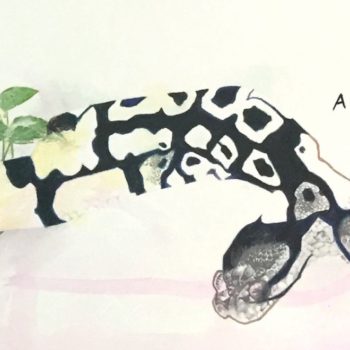
Relatable Heroes: Minority Representation in Genre Fiction
- Posted by Augur Blog
- On May 29, 2019
- 0 Comments
- black panther, diverse books, nnedi okorafor, saga
By Radhika Tyagi
Of the thirty-nine books I read in 2018, eight were written by people of color, eleven were written by women, fourteen featured female protagonists, and fifteen featured minority protagonists (that’s almost forty percent!). While I actively seek out books written by and about women and minorities, the growing availability of these books shouldn’t be overlooked. The diversity in our communities is being reflected in the stories we share, from literary fiction to graphic novels to blockbuster movies.
The importance of minority representation in mainstream media has been discussed in countless articles, interviews, and online forums. Time and time again I’ve heard the same argument: we benefit from seeing ourselves reflected in our heroes. Several schools took their students to theatres to watch Black Panther for this reason. But as more books and movies with diverse characters are being made, are we really seeing more diverse heroes?
My fictional heroes growing up were Harry Potter, Nancy Drew, and Ramona Quimby. And while I’ve read many books as an adult with protagonists who look like me, I haven’t found a Brown Girl Who Lived, or a brown amateur detective, or even just a plucky brown girl from Portland on the shelves of my local library. When a story features a minority protagonist, their minority status is often central to the plot. If you swapped the Indian characters in Jhumpa Lahiri’s The Namesake for white ones, or rewrote Simon in Becky Albertalli’s Simon vs. the Homo Sapiens Agenda as a heterosexual boy, the stories wouldn’t work. And there’s nothing wrong with this—we need diverse stories just as much as we need diverse characters. But I think we also need to see minorities occupying the “everyman” role in the stories we love.
By “everyman,” I don’t mean ordinary or generic, but relatable. Harry Potter wields his extraordinary abilities in extraordinary ways, but he also gets nervous around girls and sneaks onto weekend trips when his guardians deny him permission. He’s heroic enough for readers to look up to but human enough for readers to see themselves in him. Counterintuitive as it may seem, I believe it’s important to reflect diversity in the ordinary.
Four of the fifteen aforementioned books I read last year featuring minority protagonists were installments in the comic book series Saga by Brian K. Vaughan and Fiona Staples. The story centers on a forbidden intergalactic romance between Alana, a Landfallian, and Marko, a Wreath native, who are on the run from the authorities after having a child together. The comics are often described as “Star Wars meets Romeo and Juliet.” Though their races are fictional, Vaughan and Staples have stated that Alana and Marko are people of color, and the illustrations make this clear.
What made the Saga comics such memorable reads for me was that Alana and Marko weren’t defined by their minority status. Yes, they are characters of color, but they are also intergalactic outlaws. Alana and Marko are conventional sci-fi heroes. The nature of genre fiction allows minority protagonists to take on the role of the hero while still highlighting their unique identity, and this is why minority representation is especially important in genre fiction.
Recommended Reading List:
- The Sword of Kaigen by M.L. Wang
- Ms. Marvel by G. Willow Wilson
- More Than This by Patrick Ness
- Binti by Nnedi Okorafor
RADHIKA TYAGI is a recent college graduate and aspiring writer. Her work has appeared in Bird’s Thumb and NILVX: A Book of Magic.




0 Comments